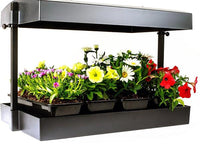How to start an Indoor grow
Setting up a grow room to raise plants indoors is a great idea. But how do you start it?
There are five basic steps to constructing your first indoor grow closet, including finding a suitable space, then make your space tight-light. Proceed to configure your space and set up an appropriate air exchange.
Some of the benefits of interior plants include; reduced carbon IV oxide levels, increased humidity, reduced airborne dust levels and air temperatures are also kept down. If you have an excessive background noise within your house, then you should consider installing an indoor grow closet.
Here are the five basic steps to building an indoor grow closet:
1. Find a suitable space
Any space within the house can be converted into a grow closet. A cupboard can be used as a grow closet or even the whole room. You may also decide to use a growth tent.
When choosing a suitable space to construct your grow closet, you need to consider the power supply within the room. If you intend to build one light set-up, then a couple of double sockets will do. The flooring should be a reflective sheeting. Avoid carpeted floors because they hold moisture and keep bacteria.
Another alternative would be to grow the plants in a tent.
2. Create a light-tight environment
If there is a window or a natural light-source within the grow room, then you need to block it off completely. Reflective sheeting can perform this job correctly because it stops light from escaping and keeps out the natural light from your grow closet.
The reflective sheeting ensures that your lighting cycle is consistent. Plants can get stressed if they are illuminated inconsistently. There are many types of grow room sheeting, including Reflex Diamond and Orca.
3. Decide on how much space the set-up will cover
After finding a suitable area, the next step is to decide how you are going to use it. For example, you can choose to use the entire room for the set-up, create a grow tent set up within the room or convert an enclosed space such as a cupboard.
Some of the best grow tent set-ups include the Gorilla Grow Tent and the Mylar Hydroponic Grow tent. Ensure that the set-up you choose matches the intensity of your grow lights. If your lighting is not intense, then your plants will underperform. You may end up harming your plants due to heat problems.
4. Acquire the correct light system
The next step is to choose a grow light system that will provide quality light for your plants' growth. A grow light consists of a ballast, lamp and reflector. The ballast is for regulating the supply of energy needed to power the light. The lamp generates light while the reflector directs the light towards the plants.
For optimum lighting, you will need to acquire a primary grow light as well as supplement lighting. Brands like Grower's Choice and Horticulture Lighting Group have a large selection of LED grow lights.
5. Set-up an air exchange system
Plants consume carbon IV oxide and release oxygen. You will need to continually replace this carbon IV oxide depleted air with fresh carbon dioxide-rich air.
You will need extractor fans to draw air out of the grow room and intake fans to introduce fresh carbon IV oxide rich air into the room. The extractor and the intake fans should be positioned in opposite corners within the grow room.
Hydroponics involves growing plants in a water-based nutrient-rich solution. Most grow closets use hydroponic systems. You can grow plants without having to use soil.









